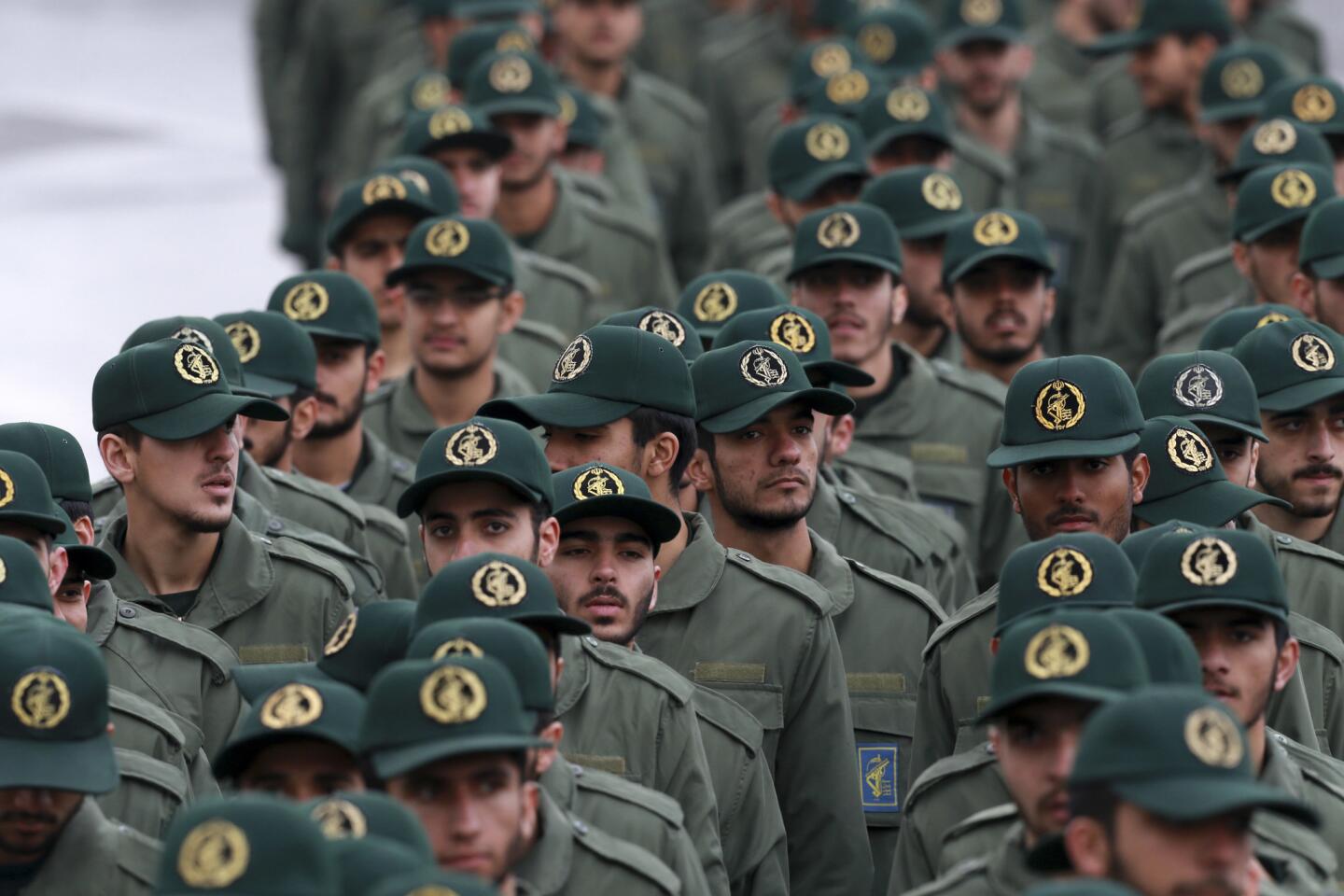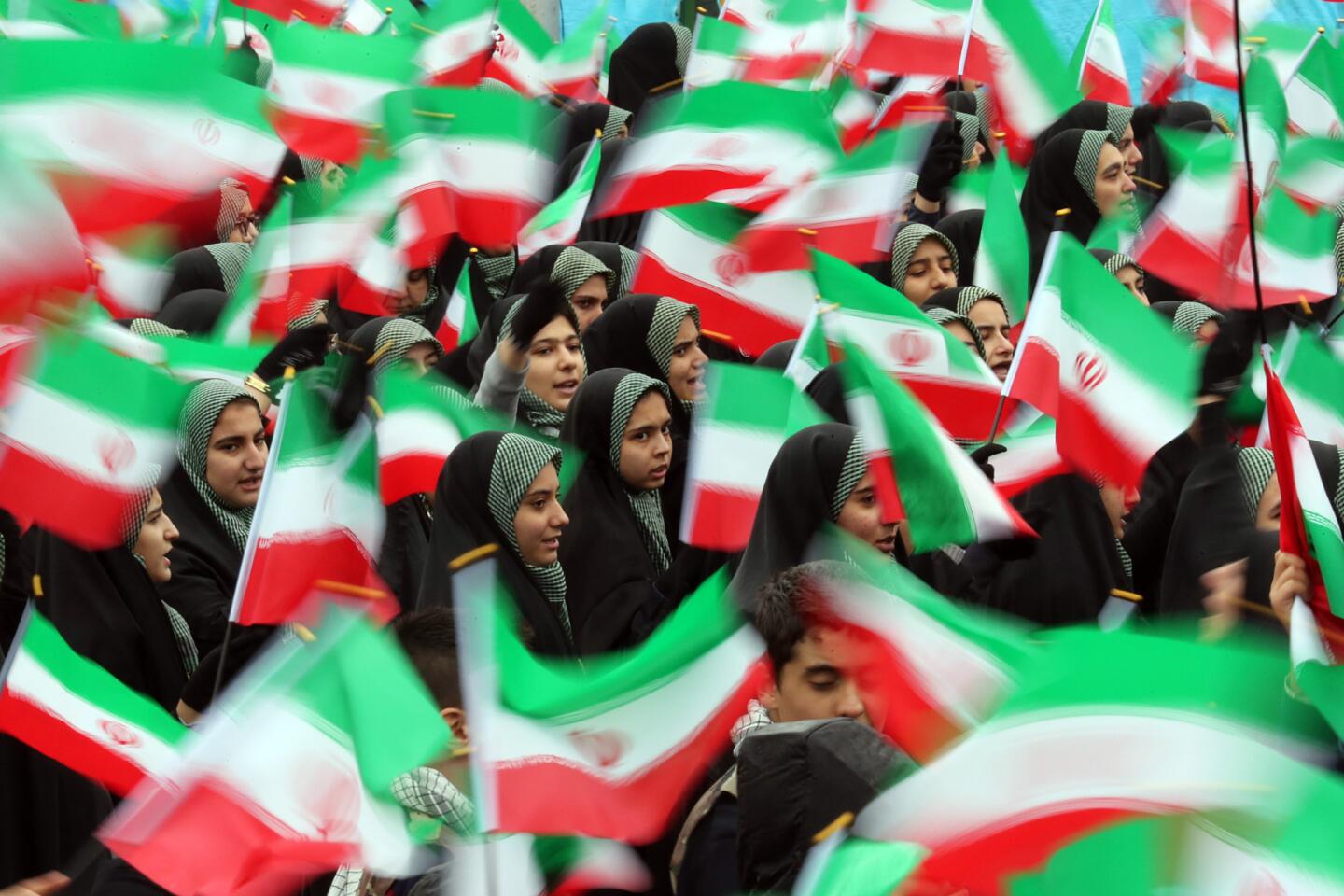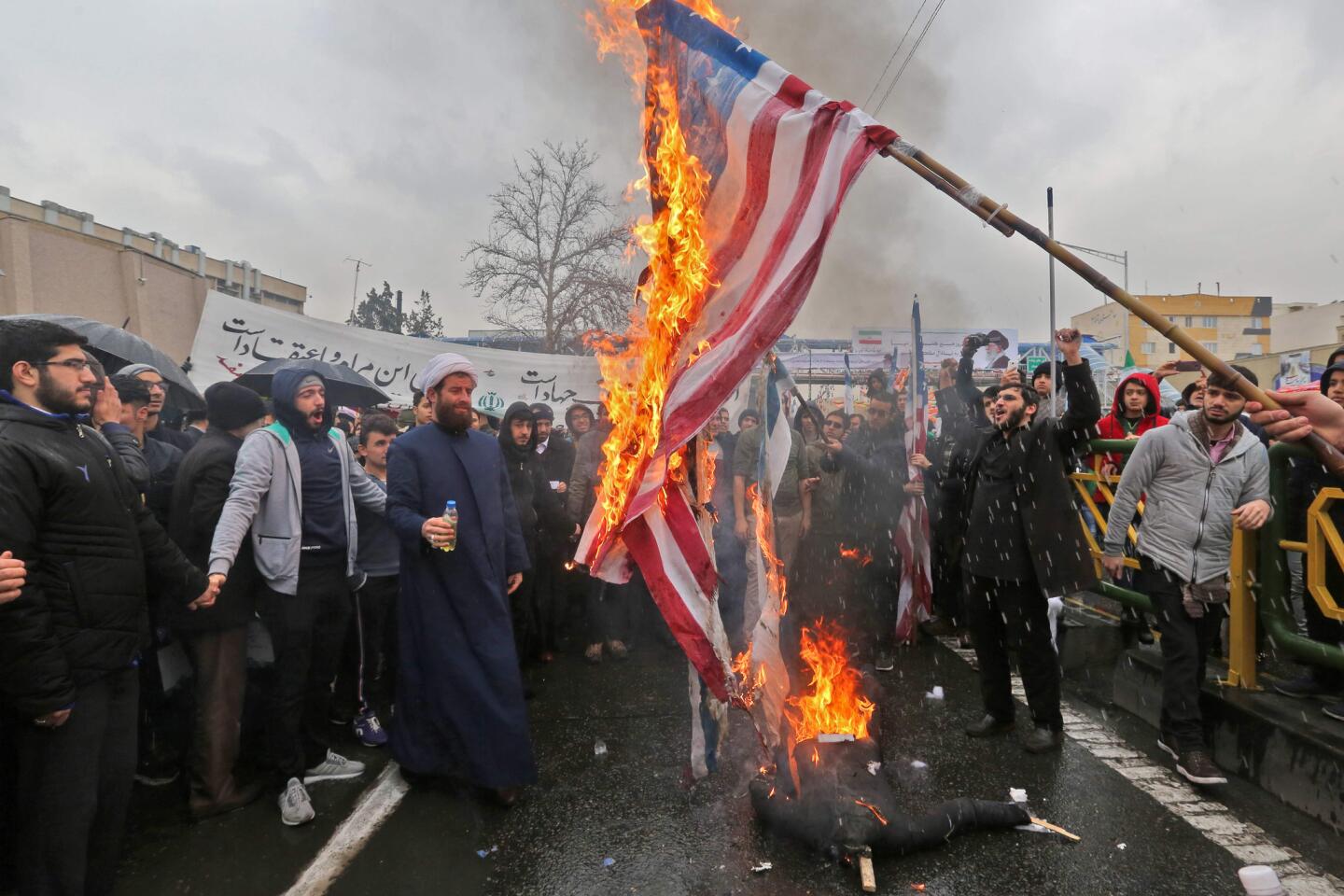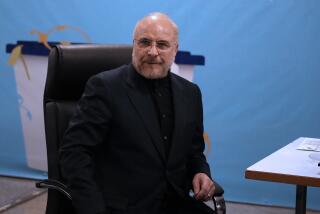Iran marks 40 years since the Islamic Revolution with the usual — chants of ‘Death to America’
Reporting from Tehran — Thousands of people took to the streets of Iran’s capital on Monday to commemorate the 40th anniversary of the Islamic Revolution, which ousted a secular, pro-American monarchy and replaced it with an anti-Western theocracy.
Despite rainy weather, people of all ages swarmed Tehran’s Azadi Square — and as in previous years, this year’s demonstration took on a festival-like atmosphere.
Children were entertained with music, and some people carried effigies of Israeli Prime Minister Benjamin Netanyahu and President Trump while others chanted “Death to America,” “Death to Saudi Arabia” and burned U.S. and Israeli flags.
Although all those are common tropes in the annual commemorations, in many ways this year’s rally was filled with more energy and was larger than in previous years.
The 40th anniversary comes at a time when tensions between Iran and the Trump administration have escalated.
In 2018, Washington reimposed tough economic sanctions on Iran that make it more difficult for other countries to do business with Tehran and called on the international community to force the Islamic Republic to concede to a dozen political and military demands.
Mohammad Zarei, a 42-year-old civil servant, carried an effigy of Trump accompanied by a sign that read: “I am Trump and I do not honor my commitments” — a reference to Trump’s withdrawal from the Iran nuclear deal. Zarei said he joined Monday’s protest to demonstrate how Iranians have survived despite sanctions imposed by the U.S.
“We are self-reliant,” he said. “We have survived all these years.”
Trump hit back against Iranian attacks with a tweet alleging that the Islamic Revolution had brought “40 years of failure.”
Maryam Hydari, 50, attended Monday’s demonstration wrapped in a full-length black chador. Holding the hands of her two children, she said life has improved for her under the theocracy and is better than it was under Mohammed Reza Shah Pahlavi.
“Forty years ago we rose against the oppression and dictatorship of the shah and now we have freedom and independence,” Hydari said.
By 11:15 a.m., President Hassan Rouhani took the stage at the Freedom Monument and spoke to the energetic crowd for roughly 45 minutes. He praised the accomplishments of the Islamic Republic and said the country was stronger and life was better than under the shah’s monarchy.
“Now more than 85% of our weapons are manufactured by domestic factories,” Rouhani told the crowd. “Before the revolution, 95% of the weapons were imported.”
Defying the Trump administration, Rouhani also said that Iran does not need permission to manufacture missiles. “Everyone in the world must know that our military might is astonishing,” he said. “Especially in the past five years we have advanced remarkably in military power.”
Over the past decade, Iran has frequently test-fired and displayed missiles.
Officials in Washington claim that launching such missiles defies a United Nations Security Council resolution that calls on Iran to avoid any activity related to ballistic missiles capable of delivering nuclear weapons. Tehran insists its satellite launches and rocket tests do not have a military component.
Congress has considered reimposing sanctions if Iran continues firing ballistic missiles.
Some Iranians who chose not to participate in Monday’s festivities highlighted their increasing frustration with the ruling establishment and said their lives have become more difficult during the last four decades.
In a survey released by IranPoll, a public-opinion research firm based in Canada, 60% of the Iranians surveyed blame Iran’s economic crisis on the government’s mismanagement and corruption.
For them, Monday’s commemoration was a reminder of the promises that the theocracy failed to keep.
Ali Shoja was 12 during the revolution. She recalls it as a hopeful time when she believed her life would improve. But Shoja, now a 52-year-old bookkeeper in Tehran, said she struggles to make a living.
“We have been suffering backwardness, rather than progress,” she said. “I am as needy as I was before the revolution.”
Shoja places responsibility on the government, which in recent years has been undergoing a power struggle between Rouhani’s reform-minded administration and conservative hard-liners who are becoming increasingly alarmed by Western influence.
“I wish Iran and America would normalize their relations,” she said.
Increased pressure from the Trump administration coupled with economic mismanagement and government corruption has also exacerbated Iran’s economic issues.
Reza Shaygan, a 67-year-old retired teacher, said he’s fed up. He said he has wasted his time waiting for reform.
“My life in the past 40 years has been full of anxiety and worries about what would happen next week or next month,” he said.
Special correspondent Mostaghim reported from Tehran and Times staff writer Etehad from Los Angeles.

More to Read
Sign up for Essential California
The most important California stories and recommendations in your inbox every morning.
You may occasionally receive promotional content from the Los Angeles Times.

















